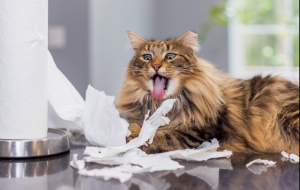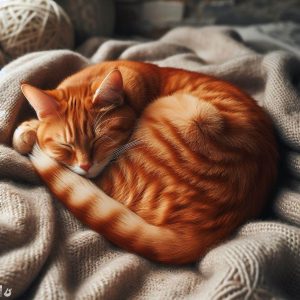My name is Lucas and my cat Shadow has a strange habit of trying to eat paper. As a cat owner, I wanted to understand this behavior better so I decided to research the topic more fully. After analyzing the information available, I’ve summarized why do cats eat paper the key points and suggestions in this guide for other cat owners.
Cats eating paper is actually quite a common feline behavior. According to studies, over 30% of cats like to occasionally munch on paper, cardboard, or other non-food items. This habit can be perplexing and even alarming for cat owners when we first notice it.
We immediately start to worry if our cat is nutrition deficient or has pica, an eating disorder involving ingesting non-food substances. However, in most cases, this behavior stems from natural cat instincts and curiosity. Understanding the roots of this quirky habit can help cat owners manage it properly.
In this guide, I’ll share my own experience with my cat Shadow chewing on paper as well as expert insights on the topic. You’ll learn the main reasons behind this behavior, which types of paper pose dangers, how to cat-proof your home, and effective methods to stop cats eating paper.
With the right tactics, cat owners can curb this behavior while still satisfying kitty’s chewing urges safely.
Why Cats Eat Paper
Cats have an inherent need to chew – While paper doesn’t offer nutritional value, the act of chewing provides cats with sensory stimulation and satisfies their instinctual need to use their mouth. Chewing helps relieve boredom and releases endorphins that make cats feel relaxed.
Paper texture appeals to cats – The light texture of paper is pleasing for a cat’s sensitive mouth. Paper is easier to chew than many cat toys and household items. The smooth feel and crinkling sound when chewing paper appeals to certain cats.
Paper absorbs alluring smells – Cats have a keen sense of smell, so paper infused with tempting aromas can seem irresistible. Food wrappers, cardboard boxes from deliveries, newspaper, mail, and paper bags often absorb odors that entice curious cats.
Paper provides fiber – Some sources suggest cats may eat small amounts of paper to aid digestion and supplement fiber intake. However, paper does not offer proper nutrition and should not replace a high-fiber cat food diet.
Attention-seeking behavior – By nibbling paper in front of their owner, cats may be acting out to get attention. Any reaction from the owner rewards this negative behavior.
Medical conditions – In rare cases, an underlying medical issue like diabetes, worm infestations, nutritional deficiency, or thyroid problems could cause paper eating. But this is very uncommon and most vet visits yield no diagnosis.
Dangers of Eating Certain Papers
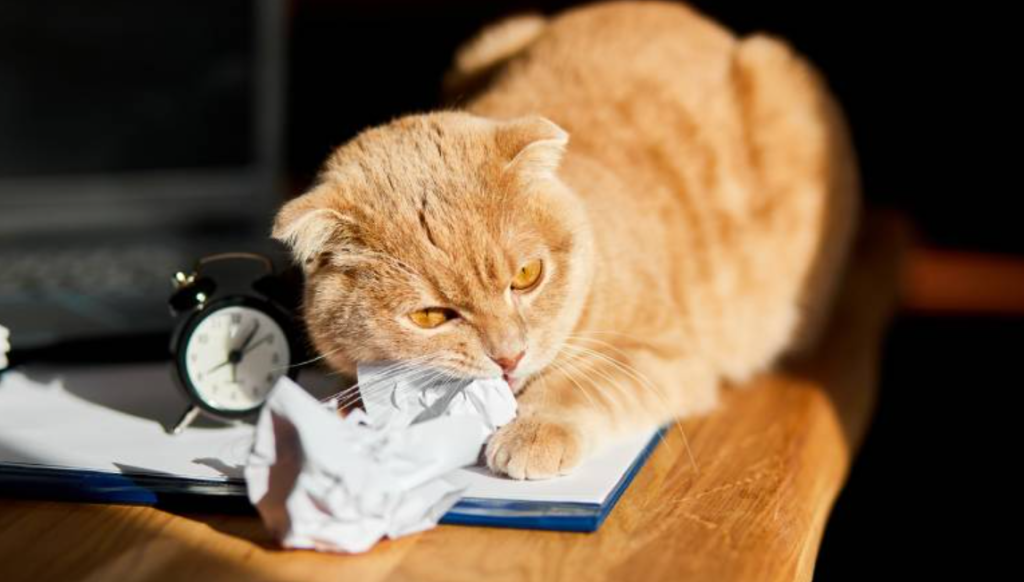
While most paper is non-toxic in small amounts, some specific types should be kept away from cats to avoid hazards if ingested:
- Painted, coated, or laminated paper – Chemical coatings and paint can irritate a cat’s stomach lining or intestinal tract. This includes gift wrapping paper, magazines, and colored paper.
- Carbon paper – Contains carbon tetrachloride and other toxins.
- Rubber bands – Can obstruct or rupture intestines if swallowed. Keep paper with rubber bands out of reach.
- Tissues, paper towels, napkins – Contain irritants that upset digestion.
- Photographs – Chemicals from photo paper and ink are toxic. The paper’s thickness also poses a choking hazard.
- Newspapers – Some inks contain lead or cadmium.
- Paper receipts – Contain bisphenol-A (BPA) from thermal coatings. This chemical is an endocrine disruptor.
- Paper litter – Absorbs germs and chemicals from cat waste.
Tip: If your cat eats paper, inspect their stool. Undigested pieces mean the paper is not passing through the GI tract properly. Seek vet advice.
Cat-Proofing Your Home
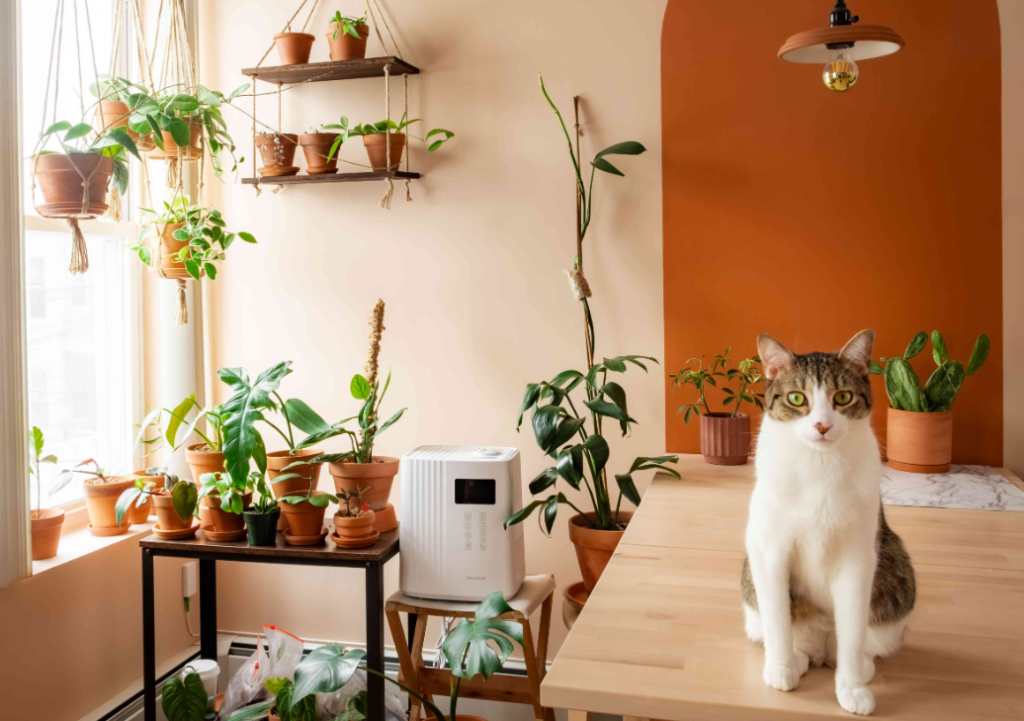
The best way to stop cats eating paper is removing the temptation by making your home less paper-friendly:
- Put away paper objects – Keep books, mail, paper bags, folders, boxes, and craft paper stored safely in closets, cabinets, or drawers. Place items cats find irresistible in off-limit spaces.
- Clear surfaces – Don’t leave paper materials out on tables or counters. Cats have access to elevated spaces.
- Use baskets for paper recycling – Covered baskets prevent cats from digging out paper items.
- Limit paper toys – While many cats enjoy playing with paper bags, tissue/wrapping paper balls, and cardboard boxes, these can trigger paper chewing. Limit access to supervised playtime only.
- Switch from paper litter – Try wood pellets, pine pellets, or crystal litter varieties to remove temptation.
- Get lidded wastebaskets – Covered trash cans keep cats from rummaging through paper waste. Use child safety locks if needed.
- Use they sprays – Lightly spray problem papers with pet deterrent sprays containing citrus or menthol oils. Or use bitter apple anti-chew spray. Reapply after the smell fades.
- Block off no-go zones – Use baby gates to restrict entry to office spaces or kids’ rooms with paper dangers.
With some clever organizing and boundary setting, you can make paper less tempting and accessible for cats.
Stopping Cats from Eating Paper
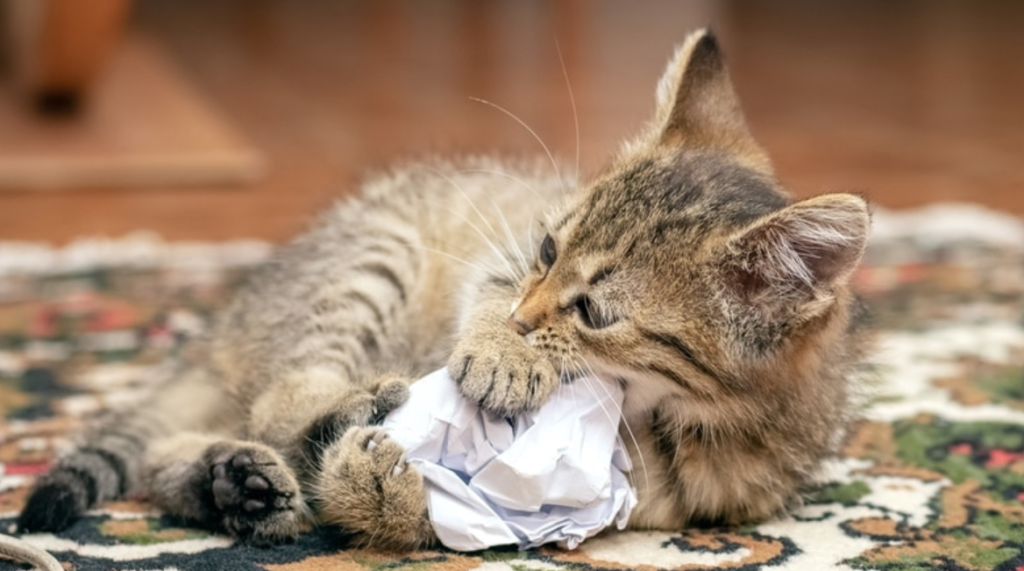
If cat-proofing methods aren’t working, here are some additional tips to curb paper chewing:
Redirect the urge to chew
- Provide alternative chew toys made of cardboard, seagrass, or recycled paper.
- Try textured chew mats that mimic paper to satisfy chewing urge.
- Increase playtime with feather teasers and interactive toys stop boredom.
Use positive reinforcement
- Reward with treats when catching kitty NOT chewing on paper.
- Praise and give playtime for good behavior.
- Place scratching posts and cat grass in problem areas to distract.
Use taste and smell deterrents
- Rub citrus peels, vinegar, cold tea bags, or band-aid adhesive on preferred papers.
- Use bitter apple or anti-chew sprays on paper products. Reapply frequently.
- Place cotton balls soaked in perfume, mint oil, lemon juice etc on surfaces.
Discourage the behavior
- Make loud startling sound or spray water when catching kitty nibbling paper.
- Place undesirable textures like double sided tape, aluminum foil or plastic carpet protector upside down on surfaces.
- Remove cat and place in time-out when catching in the act.
With patience and consistency using these methods, cats can kick the paper chewing habit.
FAQs
Is my cat’s paper chewing dangerous?
In most cases, occasional paper chewing is just an odd quirk and not harmful. Only certain paper types pose a real risk if swallowed. If you notice changes in appetite, weight, or digestion, contact your vet.
Could my cat have pica or a nutritional deficiency?
It’s very rare for paper eating to be linked to an underlying medical disorder like pica. Check for signs like appetite changes, lethargy, or other odd behaviors. Get vet advice just to be safe.
Why does my cat chew some paper but not others?
Cats use smell, texture, and even small visual details to decide if a paper looks appealing to chew or not. Greasy fast food wrappers and cardboard boxes tend to entice cats the most.
Conclusion
Understanding the root causes of paper chewing can help cat owners address this quirky behavior properly. While most paper nibbling is harmless, make sure to remove any hazardous paper dangers. With patience, you can train kitty to stop eating paper through redirection, positive reinforcement, and creating access barriers. Satisfy your cat’s needs to chew and play while also keeping your home and paper items safe. Implementing prevention early is key to breaking the paper eating habit long-term.

